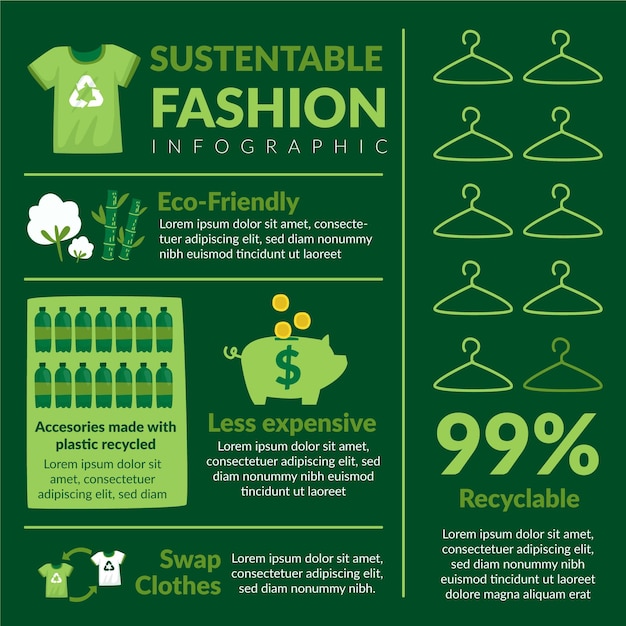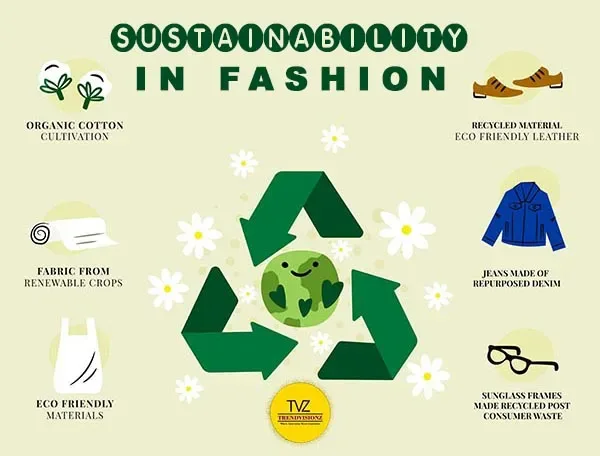Uncover Cape Town Sustainable Fashion Boutiques and Brands
Uncover Cape Town Sustainable Fashion Boutiques and Brands
Blog Article
Stay Ahead of the Contour by Exploring Innovative Fashion Fads
In a sector as dynamic as fashion, staying in advance includes more than simply complying with existing patterns-- it requires an exploration of technology. The convergence of modern technology and fashion heralds a new era of consumer involvement.

Accepting Smart Textiles
In the last few years, the garment industry has actually seen a transformative shift with the combination of clever textiles, an advanced innovation that mixes modern technology with fabric. This advancement stands for not just a blend of visual appeals and functionality yet additionally a substantial jump towards sustainability and customization in vogue. Smart textiles, additionally called e-textiles, embed advanced electronic devices such as sensing units and conductive strings within the material, allowing garments to communicate with the user or the atmosphere.
These textiles are made to monitor physical criteria, such as heart price or body temperature, offering real-time health analytics. Beyond health applications, clever fabrics are also being used for flexible clothing, which can transform shade or pattern in feedback to environmental stimuli, thus using a dynamic fashion experience.
In addition, the advancement of energy-harvesting textiles that create power from motion or sunshine is leading the way for self-dependent wearable modern technology. This development is interesting eco conscious consumers and designers intending to minimize the ecological impact of fashion. As r & d in this area advancement, smart fabrics are expected to come to be significantly widespread, reshaping the landscape of contemporary style with their multifunctional capacities.
The Rise of 3D Printing
Reinventing the production landscape, 3D printing has become a game-changer in the fashion business. This innovative innovation has actually allowed designers to push the borders of creativity, generating detailed and personalized garments that were formerly unthinkable. By leveraging digital style and additive manufacturing, 3D printing facilitates the production of intricate geometries and patterns, enabling designers to explore brand-new textures and frameworks.
A noteworthy benefit of 3D printing in style is its capacity to create on-demand, decreasing waste and reducing supply demands. This effectiveness not only enhances manufacturing procedures however additionally enables rapid prototyping, enabling designers to bring their visions to life in a shorter duration. Moreover, 3D printing sustains modification to a degree unrivaled by typical approaches, using customized fits and special styles customized to individual customer preferences.
The rise of 3D printing has also equalized style, making it obtainable to emerging developers that can now fabricate high-quality items without considerable monetary investment in standard production framework. As modern technology remains to development, the garment industry is positioned to harness the complete capacity of 3D printing, discovering brand-new materials and methods that will certainly redefine just how fashion is developed and produced.
Sustainable Fashion Technologies
As the apparel industry faces journalism demand for environmental duty, lasting style innovations have arised at the leading edge of transformative modification. The growing recognition of ecological influence has actually fueled a change towards more eco-conscious practices and products. Brands and designers are now focusing on sustainability, incorporating methods that minimize waste and decrease carbon impacts.
One substantial advancement is the increase of round style, which highlights recycling and upcycling to expand the lifecycle of garments. This method not just reduces waste yet likewise motivates consumers to take on a more mindful strategy to garments intake. Furthermore, using lasting materials, such as natural cotton, hemp, and recycled polyester, has actually gained traction. These materials require much less water and energy throughout production, dramatically minimizing ecological effect.
Another innovation hinges on the fostering of cutting-edge dyeing strategies that utilize all-natural dyes or waterless processes, thereby reducing the huge amounts of water and chemicals traditionally utilized in textile dyeing. Furthermore, advancements in biotechnology have caused the creation of lab-grown leather and textiles, offering cruelty-free and environmentally friendly options to conventional materials. Via these introducing initiatives, the garment industry is making purposeful strides in the direction of an extra lasting future.

Tech-Integrated Garments
Tech-integrated garments stands for a cutting-edge fusion of fashion and modern technology, improving how individuals engage with their clothes. This cutting-edge domain name is marked by the inclusion of smart fabrics and ingrained electronic elements, boosting both performance and visual allure. From physical fitness trackers installed in sports apparel to warmed coats regulated via mobile phone applications, tech-integrated garments supplies consumers unmatched comfort and flexibility.
Pioneering brands are driving this trend, concentrating on producing garments that react to environmental stimulations or individual commands. For circumstances, some garments can change shade or pattern in feedback to temperature level shifts, while others incorporate biometric sensors to check wellness metrics like heart rate or anxiety degrees. The smooth assimilation of modern technology into fabrics additionally reaches environmental sustainability, with efforts to develop self-cleaning materials or garments that get used to weather, hence lessening the requirement for several layers.
Moreover, the arrival of wearable innovation is not just restricted to garments but reaches devices like watches and glasses, further expanding the range of tech-integrated fashion. As the industry continues to innovate, the potential for modification and personalization in apparel grows, using consumers one-of-a-kind, tech-enhanced fashion experiences that satisfy their specific needs and choices.
Future of Virtual Fashion
Recently, the future of online style has actually emerged as a transformative force within the market, leveraging improvements in electronic technology to redefine exactly how style is developed, experienced, and consumed. By integrating browse around here increased reality (AR), virtual truth (VR), and 3D style devices, designers can now craft immersive and interactive my review here experiences that go beyond standard style borders. Online style enables the creation of garments that exist solely in digital environments, supplying limitless opportunities for technology without the limitations of physical manufacturing.
This electronic shift not only provides chances for imaginative expression but additionally addresses sustainability issues intrinsic in traditional style methods. Cape Town Sustainable Fashion. By getting rid of the requirement for physical sources, virtual fashion reduces waste and minimizes carbon footprints. In addition, the surge of online style straightens with the boosting consumer demand for special and personalized experiences, as online garments can be personalized and customized to individual choices effortlessly

Conclusion
The fashion business's future hinge on the combination of ingenious innovations and lasting weblink methods - Cape Town Sustainable Fashion. Smart textiles and tech-integrated garments are boosting capability, while 3D printing provides chances for customization and waste decrease. Sustainable style, with environment-friendly products and circular approaches, demonstrates a commitment to ecological stewardship. Moreover, virtual style is positioned to redefine consumer interactions. Adapting to these trends is crucial for brand names seeking to remain appropriate and competitive in this swiftly progressing landscape.
In recent years, the fashion industry has witnessed a transformative change with the combination of clever textiles, an innovative development that mixes innovation with material.As the fashion market grapples with the pushing need for environmental obligation, sustainable fashion advancements have actually arised at the leading edge of transformative adjustment.In current years, the future of digital fashion has actually emerged as a transformative pressure within the market, leveraging improvements in digital technology to redefine how fashion is produced, experienced, and eaten. The increase of digital style straightens with the increasing consumer need for distinct and individualized experiences, as digital garments can be customized and customized to specific choices with convenience.
The fashion market's future lies in the integration of lasting practices and ingenious innovations.
Report this page